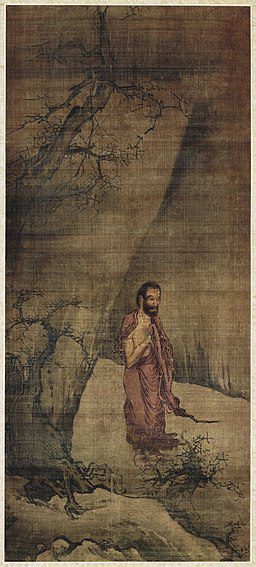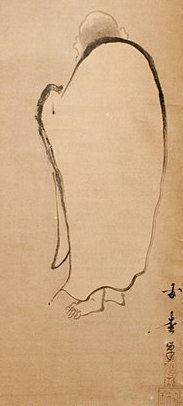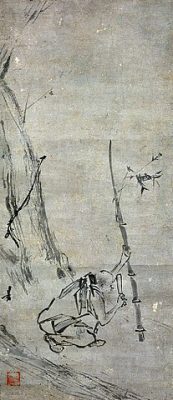Art of Japan and the Middle Kingdom (China): Buddhism, Confucianism, and other ideas
Lee Jay Walker
Modern Tokyo Times

The religious and philosophical ideas of Buddhism, Confucianism, and Taoism (Daoism) impacted enormously on China, Japan, and Korea in Northeast Asia. Similarly, each nation had potent internal faiths and ideas. For example, Shintoism in Japan and folk religion in Korea. Therefore, despite the enormous influence of the Middle Kingdom (China), the people of Japan and Korea had respective indigenous faiths and philosophical ideas.
This article focuses on the Japanese artist Kaihō Yūshō (1533-1615) and Liang K’ai (1140-1210) from the Middle Kingdom. Hence, despite hailing from different centuries and countries, both artists were influenced heavily by philosophical and religious concepts emanating from Buddhism, Confucianism, and Taoism.

In the Abrahamic faiths of Christianity, Islam, and Judaism, you have countless sects. Similarly, the same applies to Buddhism. Added to this, enormous cultural and regional fusions of ideas within all faiths. However, despite the huge cultural differences, Liang K’ai and Kaihō Yūshō were shaped by Buddhism, Confucianism, and Taoism to different degrees.
Lao Tzu said, “The snow goose need not bathe to make itself white. Neither need you do anything but be yourself.”
On death, Lao Tzu pointedly said, “Love is the greatest link that we have with those who have temporary left us.”

Hence, while these quotes are extremely different, it is easy to imagine the impact of these ideas on countless people in Northeast Asia – and further afield. Equally, Liang K’ai and Kaihō Yūshō had the connectivity of different Buddhist sects and Confucianism.
Confucius uttered, “We have two lives, and the second begins when we realise we only have one.”

Some of the above words by Lao Tzu relate to the artistic changes of Liang K’ai and Kaihō Yūshō. This concerns the art they produced in their later artwork. Henceforth, both artists adopted new artistic ideas related to the winds of internal change.
It is known that Kaihō Yūshō respected the artistic qualities of Liang K’ai. In time, the Japanese artist would take a different approach. However, in the early period, Kaihō Yūshō was inspired by the brushstroke of Liang K’ai. Therefore, Kaihō Yūshō produced delightful monochrome ink paintings in his early period.

The Buddha said, “If we could see the miracle of a single flower clearly, our whole life would change.”
Despite their different backgrounds, the lore of Buddhism impacted greatly on both individuals. Hence, while one came from a military background – and the other was known for liking alcohol – the Buddhist faith would alter their lifestyles dramatically.

PLEASE SUPPORT MODERN TOKYO TIMES by DONATING
Modern Tokyo News is part of the Modern Tokyo Times group
DONATIONS to SUPPORT MODERN TOKYO TIMES – please pay PayPal and DONATE to sawakoart@gmail.com
http://moderntokyotimes.com Modern Tokyo Times – International News and Japan News
https://www.pinterest.co.uk/moderntokyotimes/ Modern Tokyo Times is now on PINTEREST
http://sawakoart.com – Sawako Utsumi personal website and Modern Tokyo Times artist
https://moderntokyonews.com Modern Tokyo News – Tokyo News and International News
PLEASE JOIN ON TWITTER
https://twitter.com/MTT_News Modern Tokyo Times